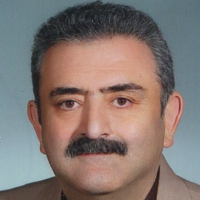A study on empirical relations for Mw-Ms, Mw-mb, and Ms-mb conversions in the seismotectonic regions of Iran
Differences in the estimation of an earthquake body-wave (mb) and surface-wave (Ms) magnitudes, and the possibility of magnitude saturation, can lead to incorrect measurements of the energy released during an earthquake. In the present research empirical regional relationships for conversion between earthquake magnitude scales in Iran have been studied. The magnitude values of 622 earthquakes reported in both the ISC-EHB and GCMT databases during the period from June 1976 to the end of December 2019 have been used. The moment magnitudes of these events are from 4.7 up to 7.8. The least-squares linear regression method was used to obtain relations for conversion of Mw-Ms, Mw-mb, and Ms-mb magnitudes, in six major seismotectonic provinces of Iran: Zagros, Kopet Dagh, Alborz, Azerbaijan, East-Central Iran, and Makran. These relations are very useful tools in regional homogenization of earthquake catalogs. The conversion relations between body wave and surface wave magnitudes and moment magnitude are important in correct energy estimation and as well as immediate earthquake damage assessment. Although the results for the conversion of Ms to Mw in different regions of Iran show a good agreement with the global model, the differences in the regression lines for the mb to Mw conversion may indicate different patterns of the body wave attenuation in the seismotectonic regions of Iran.
-
The Role of Stylolites and its Pattern Attribute on Porosity and Permeability: Evidence from a Lower Cretaceous Carbonate Oil Reservoir, Abadan Plain, SW Iran
Mohammad Nikbin, Reza Moussavi Harami *, Ghasem Aghli, Nasser Hafezi Moghaddas,
Journal of Petroleum Science and Technology, Winter 2023 -
Origin of the Gharnyaregh and Neftelijeh mud volcanoes in Gorgan plain, Iran
Somayeh Kalaneh, *, Seyed Reza Mousavi-Harami, Hosein Mohajer Soltani
Iranian Journal of Geophysics,


